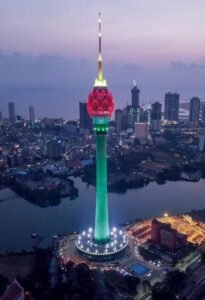
Arugam Bay
April 7, 2025
Exploring Sri Lankas top Beaches -Best Spots for Surfing, Swimming, and Relaxation
April 15, 2025
Arugam Bay
April 7, 2025
Exploring Sri Lankas top Beaches -Best Spots for Surfing, Swimming, and Relaxation
April 15, 2025
Dambulla Cave Temple
Perched atop a massive rock hill in the central part of Sri Lanka, the Dambulla Cave Temple is one of the most impressive and historically significant Buddhist sites on the island. As a UNESCO World Heritage Site, this remarkable temple complex consists of a series of caves adorned with intricate murals and thousands of Buddha statues. Whether you're a history enthusiast, a spiritual seeker, or someone fascinated by ancient architecture, a visit to the Dambulla Cave Temple offers a deep dive into Sri Lanka’s cultural and religious heritage.
Why Visit Dambulla Cave Temple?
The Dambulla Cave Temple is one of the best-preserved and most impressive cave complexes in Sri Lanka, offering a glimpse into the country’s ancient Buddhist culture and artistry. The temple’s impressive collection of Buddha statues, historical murals, and scenic location make it an unmissable destination for anyone exploring Sri Lanka’s Cultural Triangle.
The temple is also known for its tranquil atmosphere, with pilgrims and visitors alike drawn to the sacredness of the site. For travelers interested in learning about Sri Lanka's religious history and its profound connection to Buddhism, Dambulla is a must-visit destination.
Top Attractions at Dambulla Cave Temple
- The Cave Temples – A Sacred Collection of Buddhist Art: The Dambulla Cave Temple is composed of five caves that are adorned with over 150 Buddha statues. These caves, carved into the rock face, are filled with intricate paintings and sculptures that depict the life of Buddha, the history of Buddhism, and various Buddhist deities. The largest and most impressive of the caves is the Great Cave, which houses a massive reclining Buddha statue, surrounded by detailed murals depicting key moments in the Buddha’s life.
- Reclining Buddha – The Most Iconic Statue: The Reclining Buddha in the main cave (also known as the Mahastupa Cave) is the largest Buddha statue in the complex, stretching over 14 meters long. The statue represents the Buddha in his final moments, symbolizing his passage into Nirvana. The sheer size and artistry of this statue make it one of the most iconic symbols of Buddhist devotion in Sri Lanka.
- Mural Paintings – A Glimpse into Ancient Art: The walls and ceilings of the caves are covered in vibrant murals that date back to the 18th century. These murals are not only important for their artistic value but also for their historical and religious significance. The intricate depictions include scenes from the Buddha’s life, illustrations of heavenly beings, and images that represent the concept of karma and the cycle of rebirth. The murals provide a unique window into ancient Sri Lankan art and religious thought.
- Golden Temple of Dambulla – A Modern Addition: At the base of the rock hill, the Golden Temple of Dambulla is a more recent addition to the site, with a large golden Buddha statue standing prominently at the entrance. The temple complex houses modern structures and shrines, but the real highlight is the breathtaking view of the rock temple from below, where the golden statue can be seen looming against the backdrop of lush greenery.
- Scenic Views from the Rock – A Panoramic Outlook: As you climb the stairs to reach the cave temples, you’ll be rewarded with stunning panoramic views of the surrounding countryside. The Dambulla Rock, rising more than 160 meters above the surrounding plains, offers sweeping vistas of the nearby towns, fields, and hills. The hike to the temple, while relatively short, allows visitors to appreciate the natural beauty of the area.
Historical Significance of Dambulla Cave Temple
The Dambulla Cave Temple has a rich history that dates back over 2,000 years. It is believed that King Valagamba took refuge in these caves during the 1st century BCE when he was exiled from his kingdom. After regaining power, he converted the caves into a temple, making it a significant site of worship for Buddhists. Over the centuries, the temple was expanded and renovated, adding more statues, murals, and inscriptions, creating a unique fusion of art, history, and spirituality.
The Dambulla Cave Temple is not only a sacred Buddhist site but also an important symbol of Sri Lanka’s cultural heritage and resilience, reflecting the island’s deep-rooted connection to Buddhism.
Best Time to Visit Dambulla Cave Temple
The best time to visit Dambulla Cave Temple is during the dry season, from December to April, when the weather is sunny and pleasant for exploring the site. The cooler months of November to March are ideal for a comfortable visit, as the heat of the day is not as intense, making the climb to the temple more enjoyable. However, Dambulla is a year-round destination, and the temple remains open for visitors throughout the year.
How to Get There
Dambulla is easily accessible from Colombo, about 148 kilometers away, and can be reached in around 3 to 4 hours by car. The temple is also close to other popular tourist destinations in the Cultural Triangle, such as Sigiriya, Polonnaruwa, and Kandy, making it a convenient stop for travelers exploring the region. If you're traveling from Sigiriya, Dambulla is just a 30-minute drive away.


